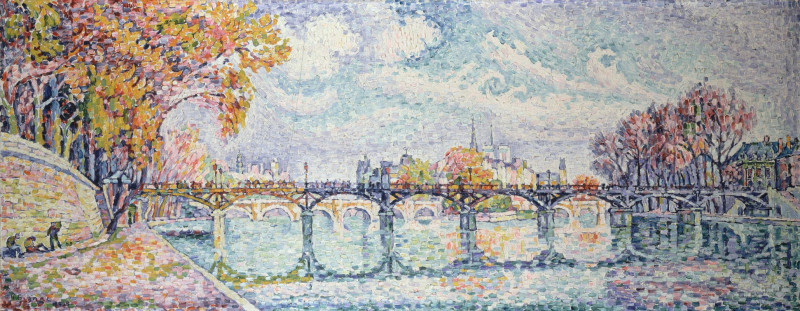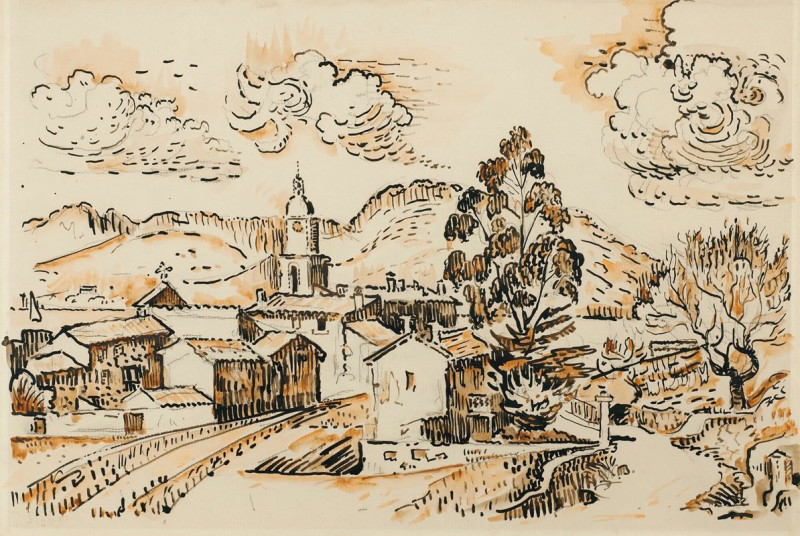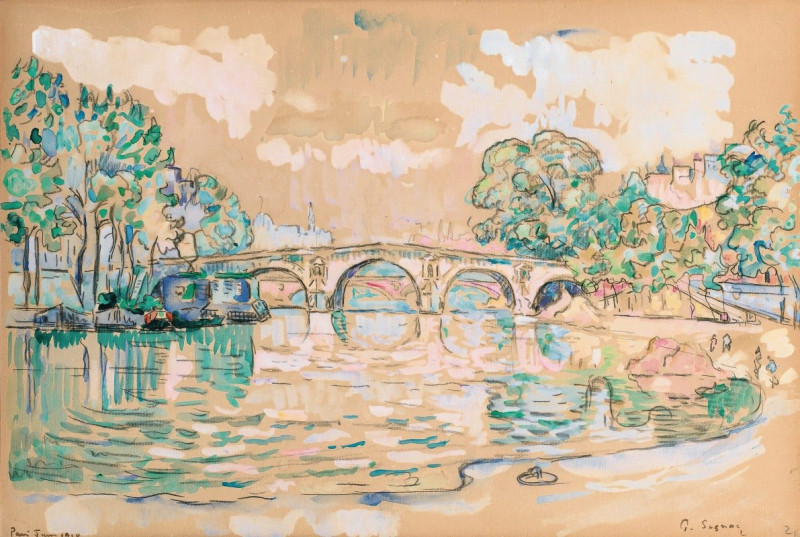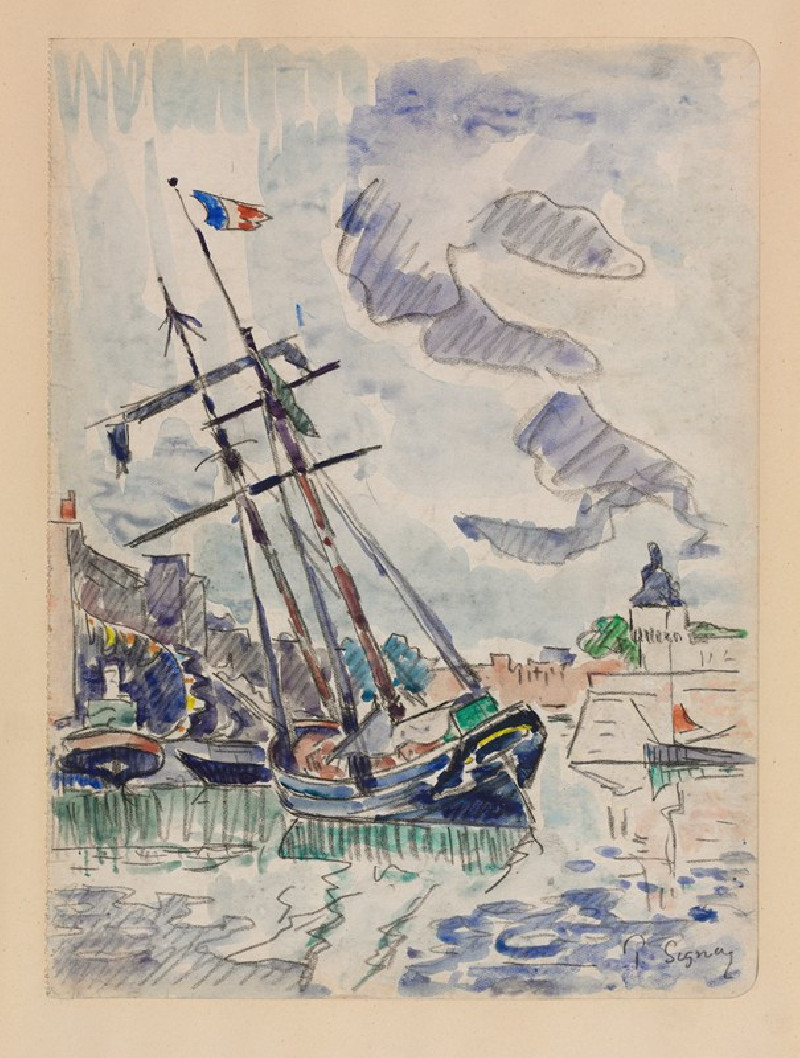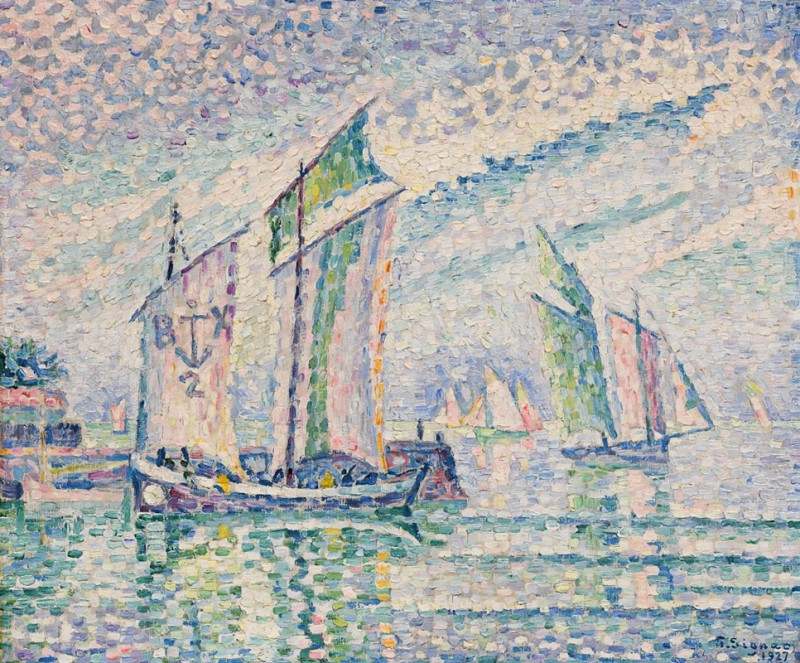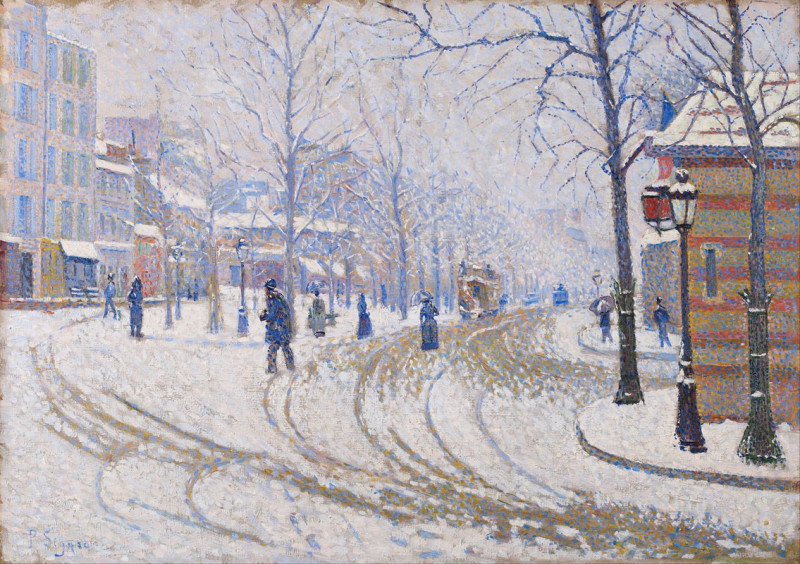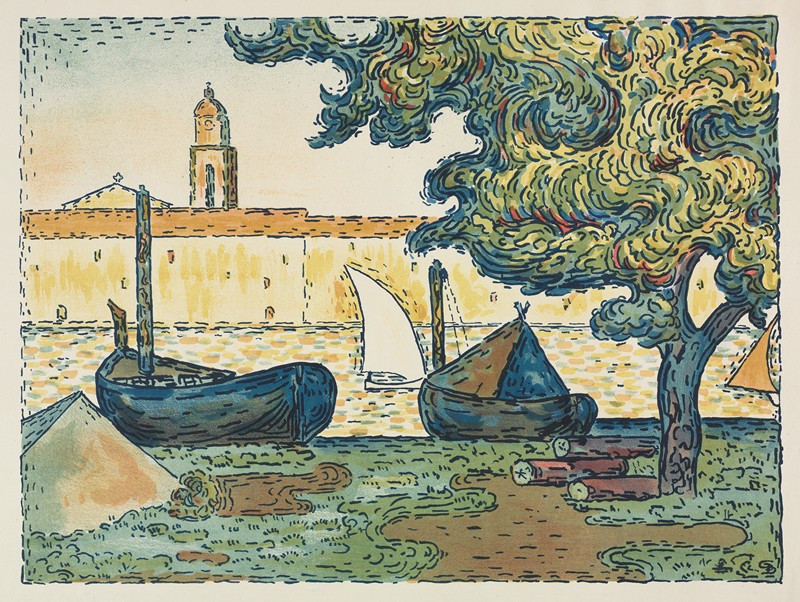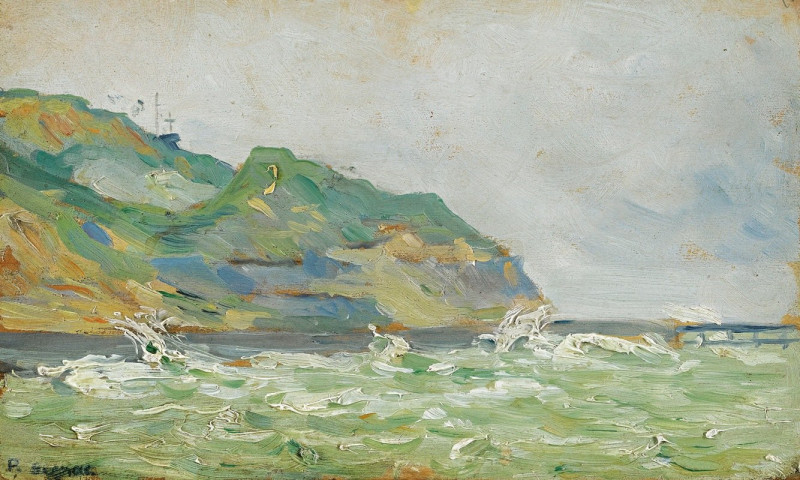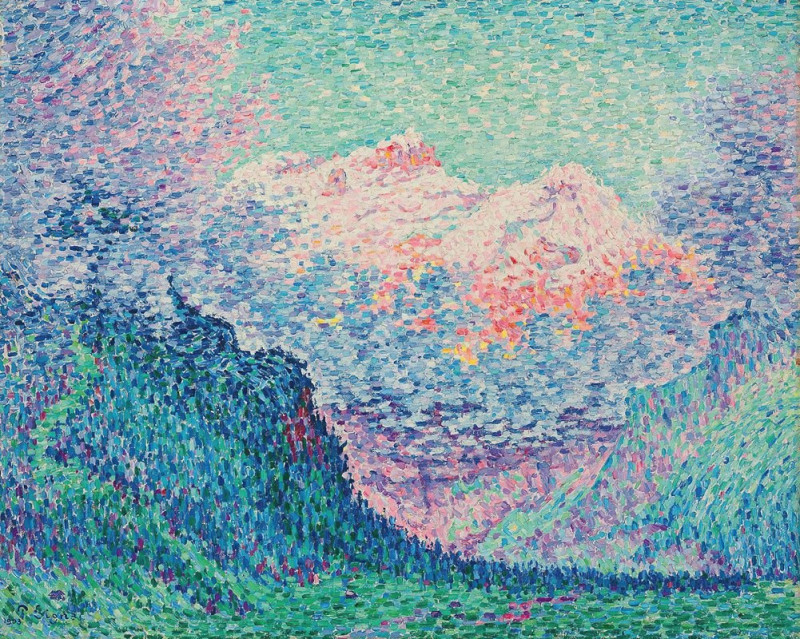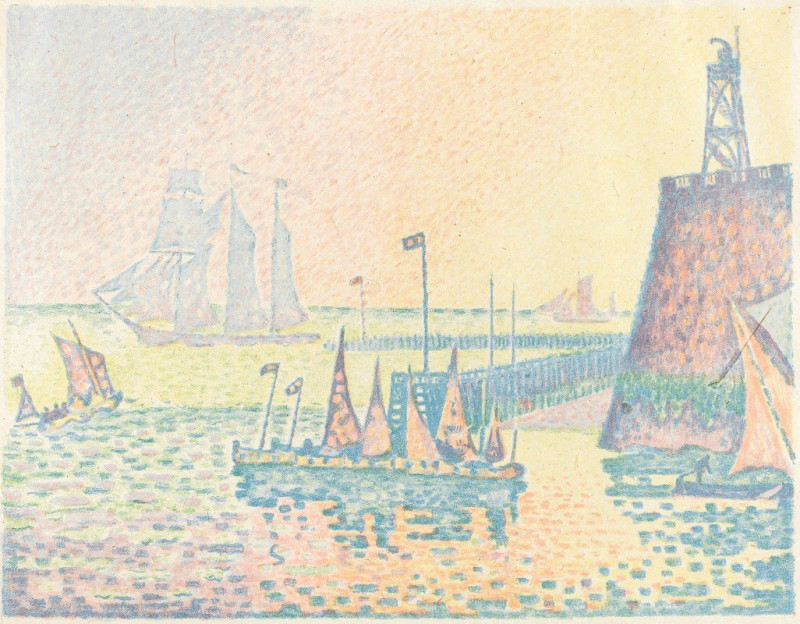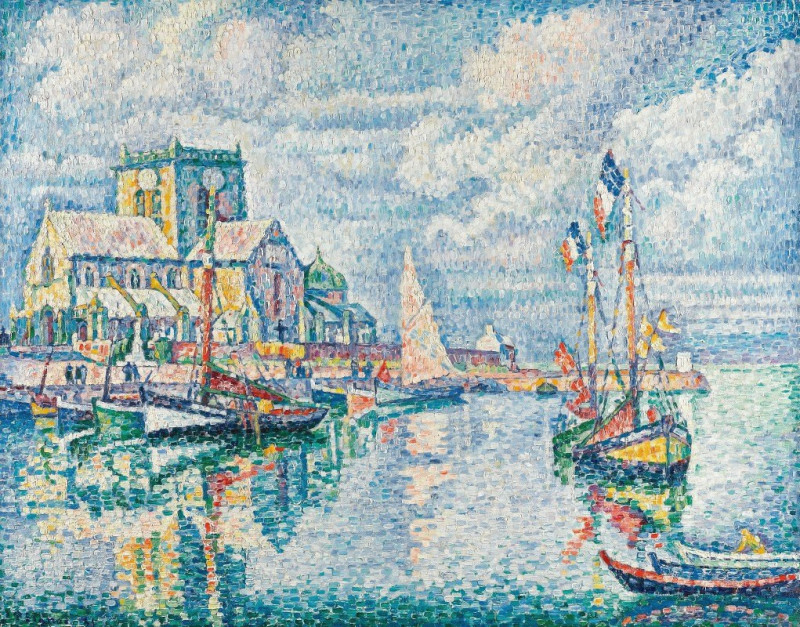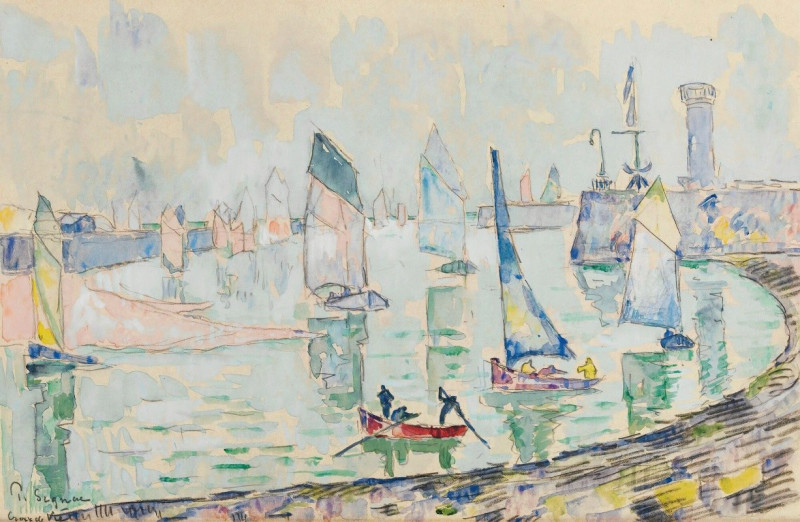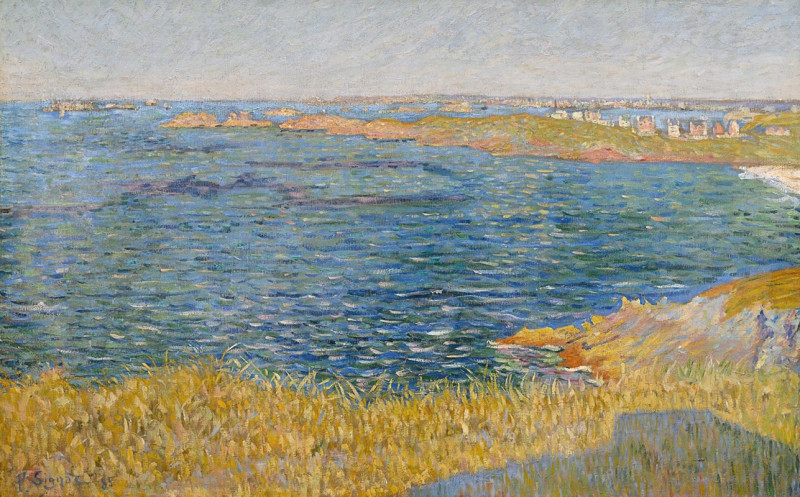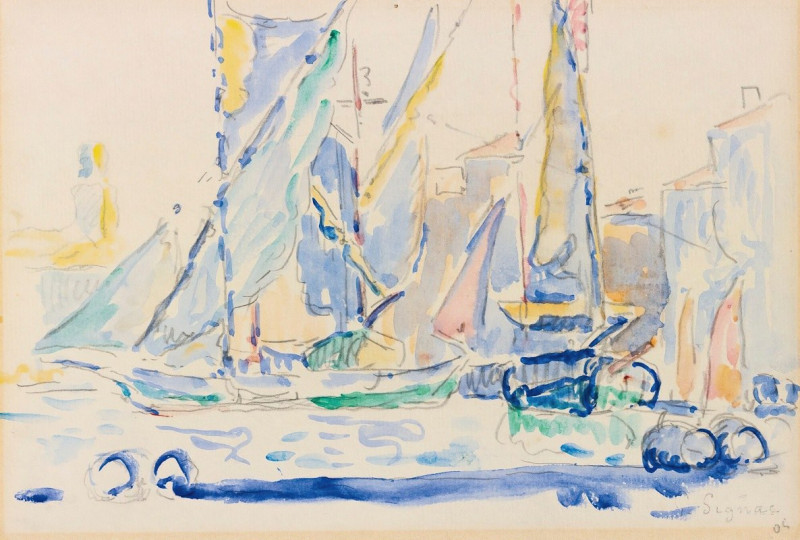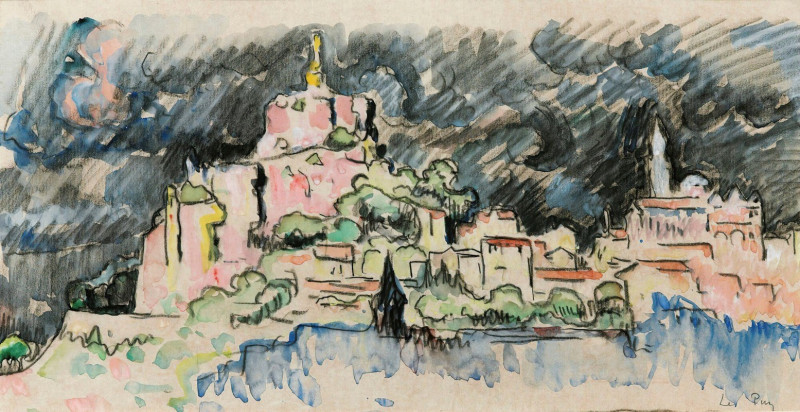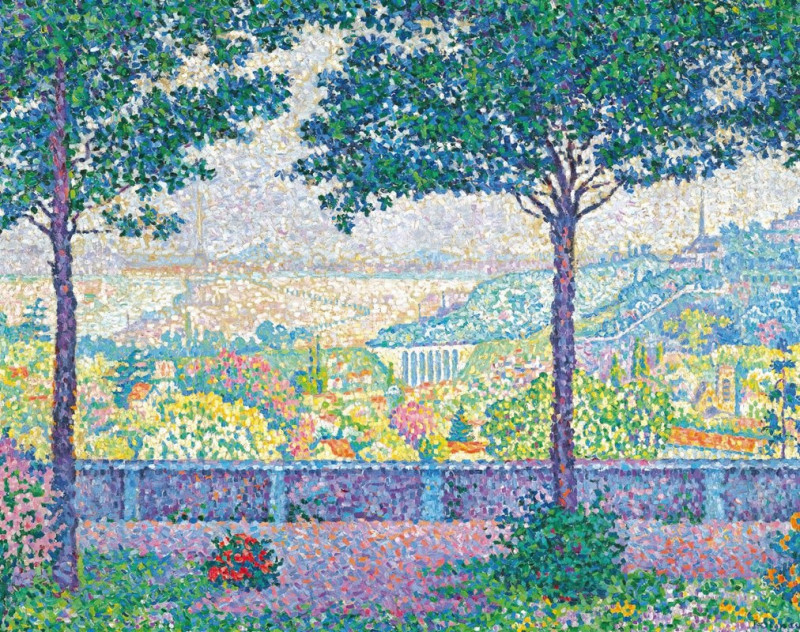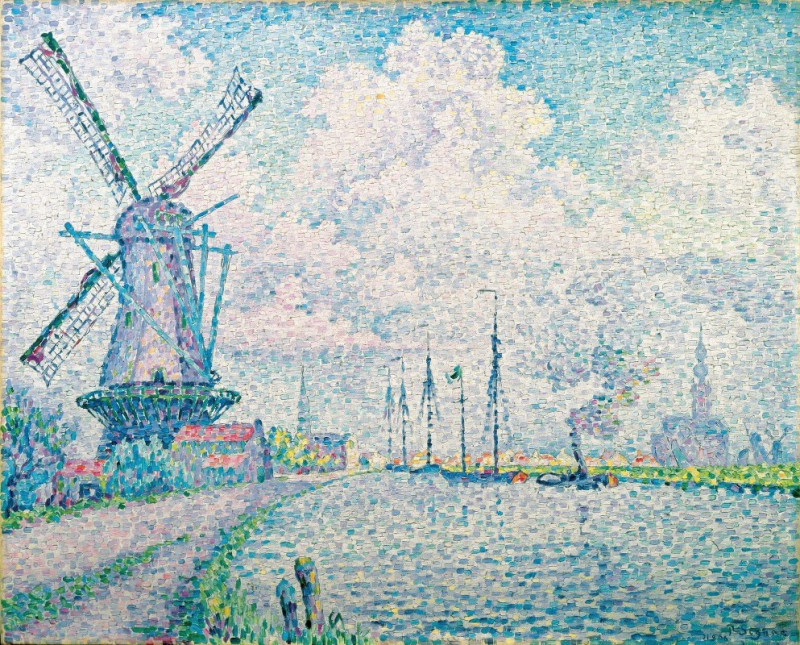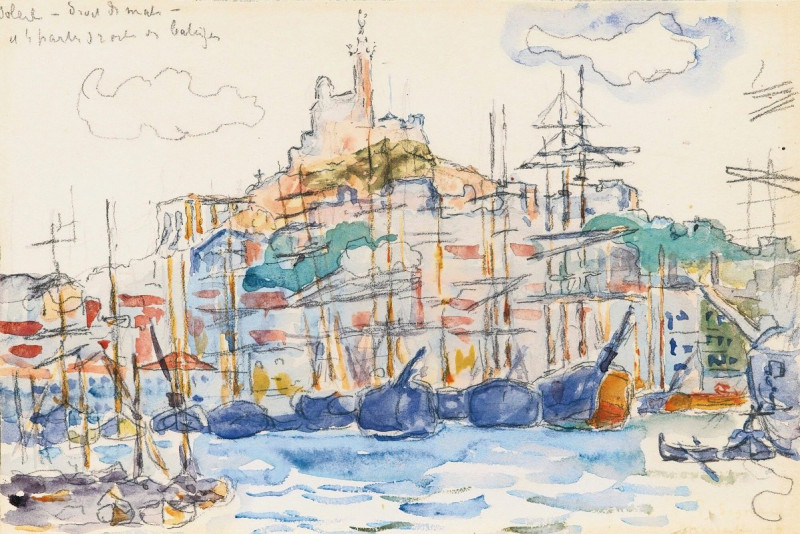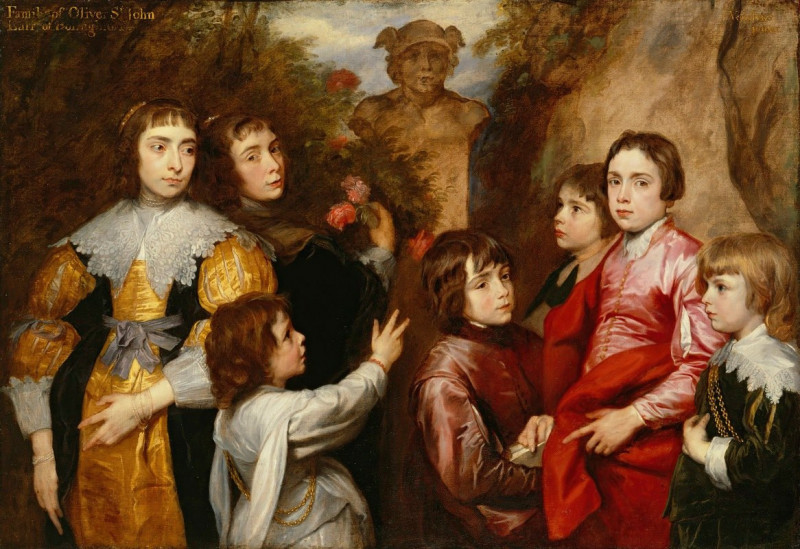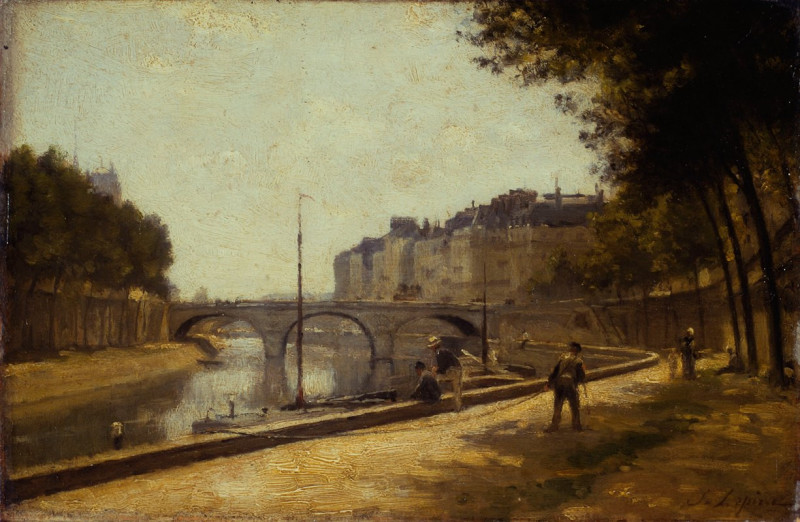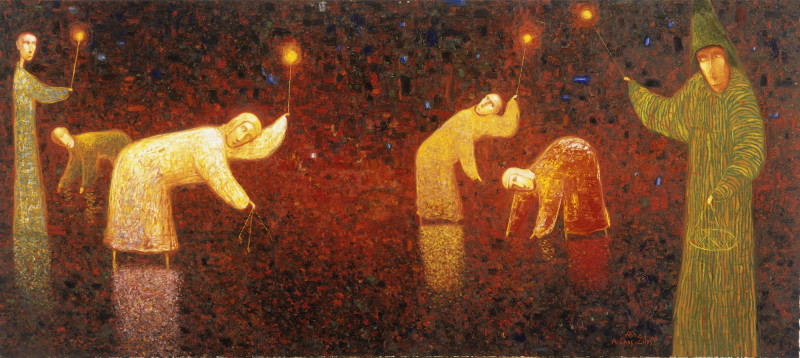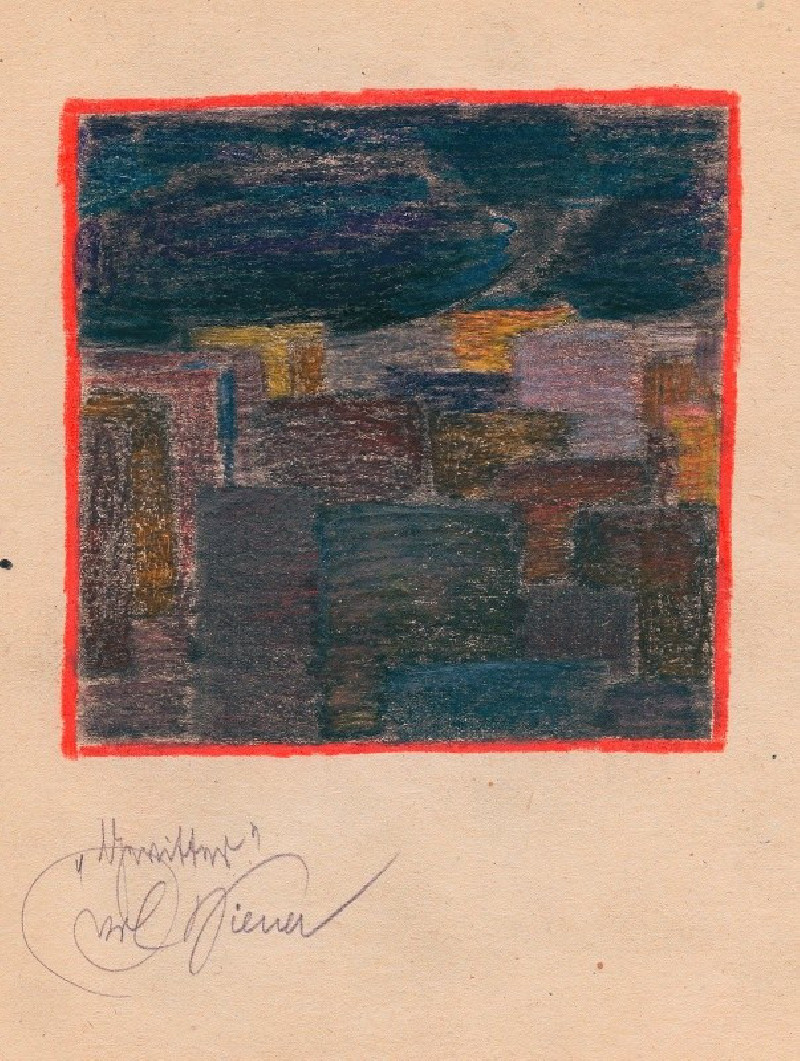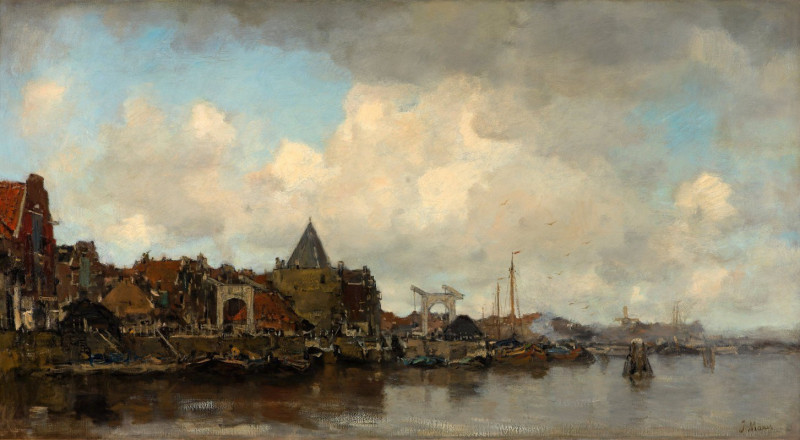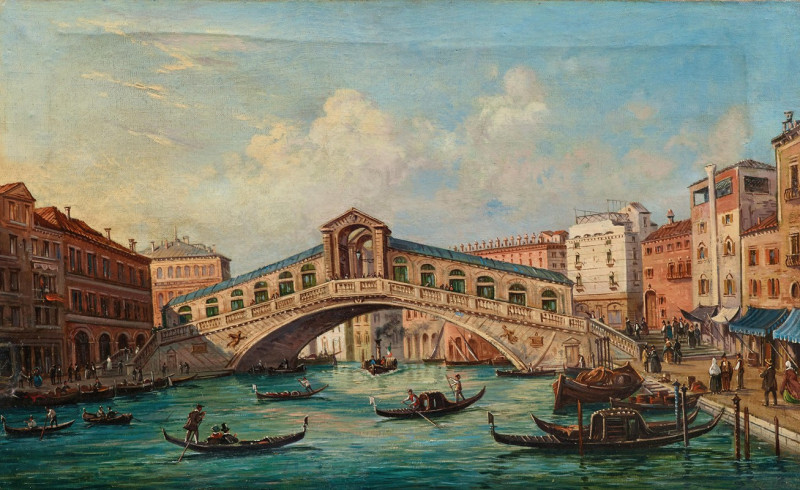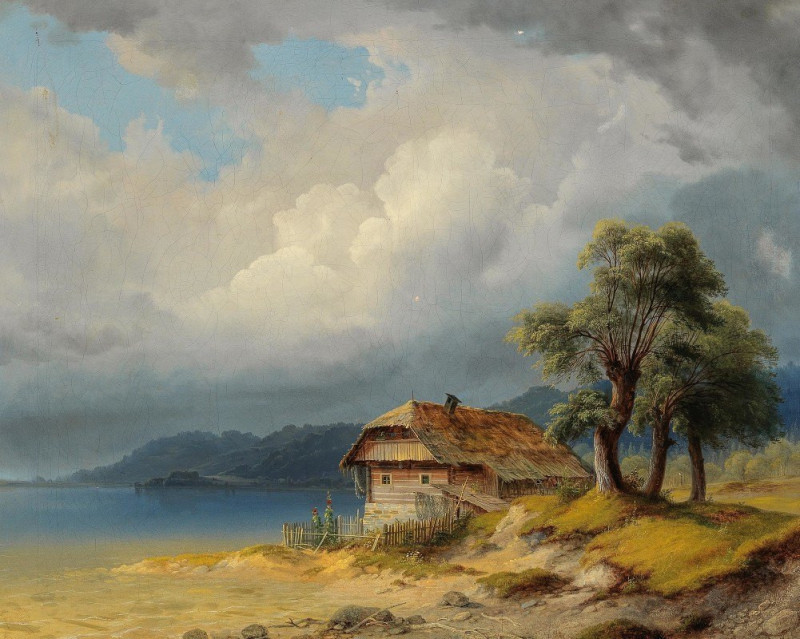Le pont des Arts (1928)
Technique: Giclée quality print
Recommended by our customers
More about this artwork
"Le pont des Arts," painted by Paul Signac in 1928, is a luminous depiction of a beloved Parisian landmark rendered in the distinct Pointillist style. The artwork features a panoramic view of the Pont des Arts bridge spanning the Seine River, bathed in the soft glow of early autumn.This painting invites viewers into a serene scene characterized by bursts of vibrant colors and a tapestry of small, precise brushstrokes that create a shimmering effect of light and color. To the left, three figures enjoy a leisurely day by the riverside, set against a brilliant display of fall foliage. The centralized bridge connects the viewer to a softly defined cityscape silhouette in the background, with Parisian architecture gently rising against a dynamic sky swirled with blues and whites.Signac masterfully captures the interplay of light, water, and urban life, using a spectrum of vivid colors to reflect the changing seasons and the timeless charm of Paris.
Delivery
Returns
Paul Signac (1863-1935) was a French Neo-Impressionist painter. Together with Georges Seurat, Signac developed the Pointillism style. He was a passionate sailor, bringing back watercolor sketches of ports and nature from his travels, then turning them into large studio canvases with mosaic-like squares of color. He abandoned the short brushstrokes and intuitive dabs of color of the impressionists for a more exact scientific approach to applying dots with the intention to combine and blend not on the canvas, but in the viewer's eye.

